Different Types of African Dog Breeds



See files for Dogs
Africa is a continent is known for so many things, particularly its rich cultural history and traditions. Its flora and fauna have an incomparable diversity. If we are to mention animals and Africa in the same sentence, many of us will immediately think of areas like the savanna, desert or jungle. Within these ecosystems are some of the most varied and fascinating wildlife species we can imagine. For this reason, we may think less of domestic animals from Africa, but they are no less fascinating. This can be seen by looking at the various domestic and wild dog breeds domestic to Africa.
At AnimalWised, we bring you our lost of 10 different types of African dog breeds. We provide information on African dog breeds both large and small, as well as providing pictures to see the range of physical characteristics they display.
- What are the types of African dog breeds?
- Basenji
- Azawakh
- Sloughi
- Rhodesian Ridgeback
- Coton de Tuléar
- Boerboel
- Aidi
- Africanis
- African Wild Dog
- African Hairless Dog
What are the types of African dog breeds?
Here is a non-exhaustive list of different African dog breeds:
- Basenji
- Azawakh
- saluki
- Rhodesian Ridgeback
- Coton de Tuléar
- Boerboel
- Aidi
- Africanis
- African Wild Dog
- Abyssinian Hairless Dog
In the rest of this article we take a closer look at the different aspects of character, care and health which affect each individual African dog breed. We also provide interesting facts and pictures so that you can see for yourself.
1. Basenji
The Baseni is a very special dog for many reasons. In addition to being one of most popular African dog breeds in the world, they are considered the oldest. This is due to a genome analysis study which compared DNA of 161 different dog breeds[1]. Part of their appeal as a companion animal is because it is one of the dog breeds which barks the least. Their vocalization is more akin to a yodel and is called a ‘baroo’ in its native Africa.
In addition to being practically ‘barkless’, the Basenji has a somewhat timid temperament. They can be wary of strangers and even within the family will develop a close bond with one person. However, they are very loving. Physically, they are very athletic and known to be excellent climbers. They are believed to be somewhat ‘cat like’ in behavior, being very particular with their hygiene and have a distaste for being wet.
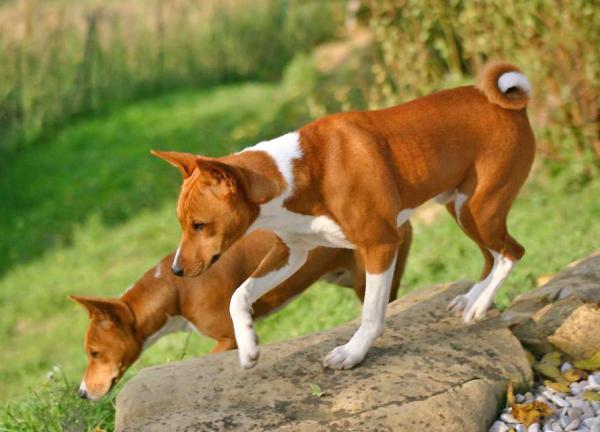
2. Azawakh
While the Azawakh resembles the Greyhound, they are not the same. They are a type of sighthound, a group of dog breeds which the Greyhound also belongs to. Although their exact origins remain unclear, they are believed to have emerged from the region of Mali closest to the southern Sahara Desert. Their ancestors were adopted as a kind of talisman by the nomadic Tuareg tribe. For this reason, this breed of dog remained isolated in this region for several centuries. It wasn't until the 1970s when they arrived in Europe.
As with all sighthounds, the Azawakh stands out for their athletic body, taller than it is wide and very elegant. Thanks to their physiognomy, i.e. long powerful legs, great flexibility and physical endurance, they can reach extraordinarily fast speeds.
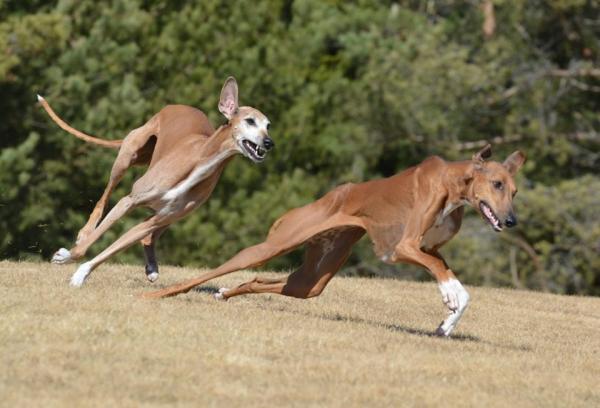
3. Sloughi
Continuing our list of African dog breeds is the Sloughi, also known as the Arabian Greyhound. They are another of the world's oldest dog breeds, although their exact origins remain unclear. It is believed they originated somewhere in the region of current day Ethiopia. They then spread through the Maghreb thanks to Bedouin nomads. This is why a large part of the Sloughi dogs brought to Europe came from the area where Algeria, Morocco, Tunisia and Libya are currently found.
Their name is a reference to the great popularity of this type of Greyhound in Arab states. For many years they were deployed in a cruel method of hunting which is, fortunately, prohibited today.
The most notable physical characteristics of the Sloghi are:
- Tall elegant body
- Wedge-shaped head
- Relatively small triangular heads
- Short, smooth and fine coat
- Dark fawn, red and brindle with white patches
- A black mask is also accepted in this African dog breed

4. Rhodesian Ridgeback
The Rhodesian Ridgeback is currently the only only canine breed from South Africa recognized by the FCI (Fédération Cynologique Internationale). For a very long time, this African dog breed was known as the ‘African lion dog’. Their current name refers to both their origins and the strip of hair in its back which runs in an inverted direction to the rest of their coat.
They are a large dog with a long body and well-developed musculature. They need high doses of physical activity in order to release their pent up energy. The Rhodesian Ridgeback is very loyal to their adopted family, but they can be shy in the presence of strangers. With proper socialization from an early age, they can learn to establish positive relationships with other dogs, stimuli and various environments.
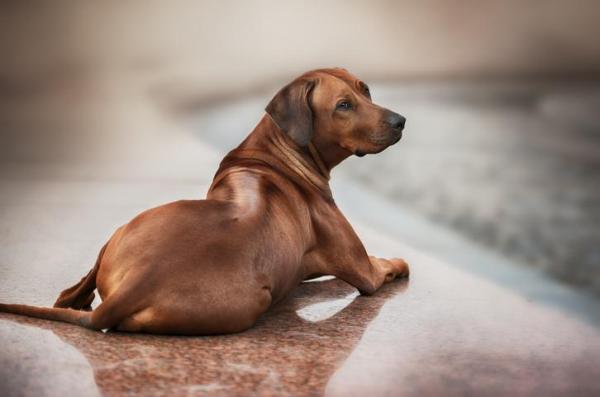
5. Coton de Tuléar
The Coton de Tuléar is one of the smallest breeds of African dog. They are native to the island of Madagascar, specifically the port city of Tuléar. Although there is no register with their exact origins, it is believed these animals come from the Bichon family of dogs which were brought from Europe to Madagascar. How exactly they arrived remains a mystery, but various accounts attribute them to French, Spanish or Portuguese visitors.
Perhaps their most characteristic feature is their soft, white and dense coat which resembles cotton. It is this and their origin which derives their name. Their appearance is similar to other Bichon breeds such as the Bichon Frise and Maltese. Their small body is slightly longer than it is tall and they have a gentle, cheerful and sociable character, They are noted for often standing on their back legs and can make a wonderful companion animal.
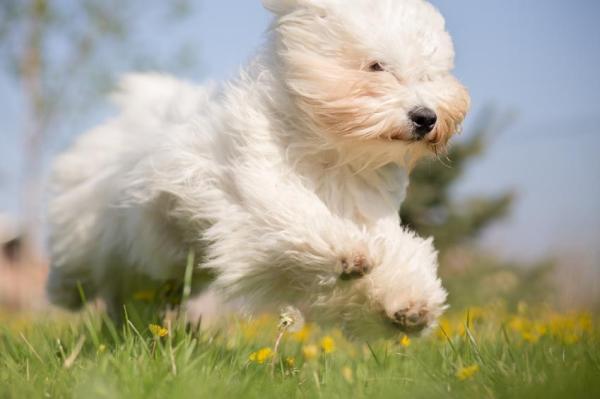
6. Boerboel
As with the Rhodesian Ridgeback, the Boerboel is another native South African dog breed. They are a hound dog and are known internationally under various names including the South African Mastiff, African Mastiff and African Boerboel. Due to their development, it has been assumed that the breed origins of this dog lie in the Bullmastiff, Great Dane and the now extinct German Bullensbeisser.
Thanks to their imposing appearance and size, this dog is unlikely to go unnoticed. For this reason and more, they require an experienced guardian to care for them. This dog is very suspicious in the presence of strangers. They have been historically trained as a guard and defence dog. This is why socialization is the key to their education.
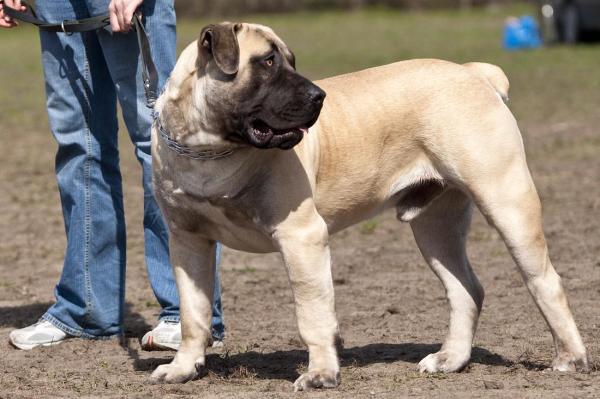
7. Aidi
One of the lesser known African dog breeds, the Aidi is not well-known outside of their native territory. Their origins are believed to lie in the mountainous regions of the North African part of the continent. These include the Atlas mountains located in present-day Morocco. These furry canids accompanied the nomadic Berber tribes, providing protection and herding for their sheep. They were also used hunting big game such as wild boars.
Aidi are medium sized dogs. their body is slightly elongated and they have a particularly well-developed musculature. The are also notable for their strength, agility and great physical stamina. Their coat is abundant, short, smooth and thick. They are usually white in color and are combined with shades of black and brown. Regarding their character, the Aidi is an active and very loyal dog. They offer plenty of affection and are very protective over their family.
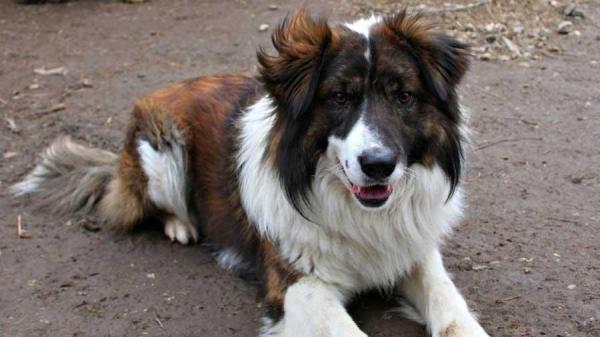
8. Africanis
Another South African dog breed, the Africanis is also known as the Zulu dog, Hottentot Hunting Dog, Bantu Dog, Katali or simply the African Dog. These other names are helpful in their homeland as the term ‘Africanis’ is also a generic word used for any dog native to this region. As with many other African dogs on this list, their origins are poorly known. It is estimated they began as crosses between wild African dogs and bloodhounds introduced by European settlers.
They are a medium-sized dog and have a well-defined musculature. Their coat is short and thick, presenting in almost any color. Some individuals posses the same distinctive hair pattern along their spine as the Rhodesian Ridgeback. Africanis are fast, slender and active dogs. For this reason, they need a lot of activity and engagement from their tutors. If they do not exert themselves sufficiently, they will struggle to balance their behavior.
Today the Africanis is classified as an emerging breed by the KUSA (Kennel Union of Southern Africa). The Africanis Society of South Africa is currently trying to fulfill the necessary procedures to have the breed officially recognized by the FCI.
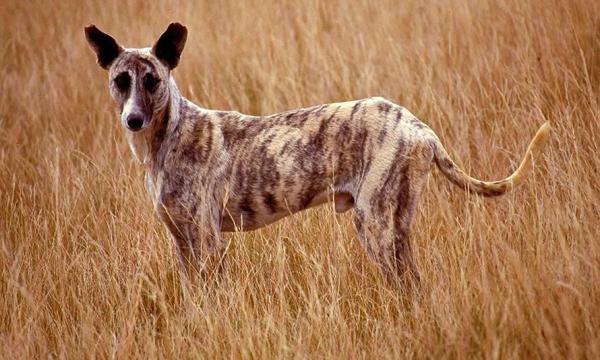
9. African Wild Dog
The only non-domestic dog breed on our list of African dog breeds is the African wild dog (Lycaon pictus). They are also sometimes known as the hyena dog. They are a carnivorous animal belonging to the canidae family and are distinct from the domestic dog in various ways. They only have 4 digits on each forepaw (domestic dog breeds normally have five) and they have 40 teeth compared to 42 of other dogs.
They are very large African dogs since they weigh between 20 and 30 kilos and measure between 70 and 80 cm at the withers. We cannot discuss the African wild dog and forget to mention their very characteristic ears. They are large like saucers, emanating from their large skull like those of a hyena. The entrance to their ear canals are very hairy which helps to protect them against parasites. Another important physical characteristic is their coat which is black, yellow and brown in distinct patterns of patches and spots.
The African wild dog is a gregarious animal which lives in packs of about 20 individuals. They are hierarchical and at the top of the social pyramid are one or two individuals considered to be the alpha pack leaders. The alpha males are the only members of the pack allowed to reproduce. Once they fertilize a female, it is possible for the litter to number up to 20 puppies.
Due to their necessary fierce nature in the African savannas, the African wild dog has been hunted without mercy. It is estimated that in less than a century, the wild African wild dog population has dropped from around 500,000 individuals to less than 3,000 in Sub-Saharan Africa.
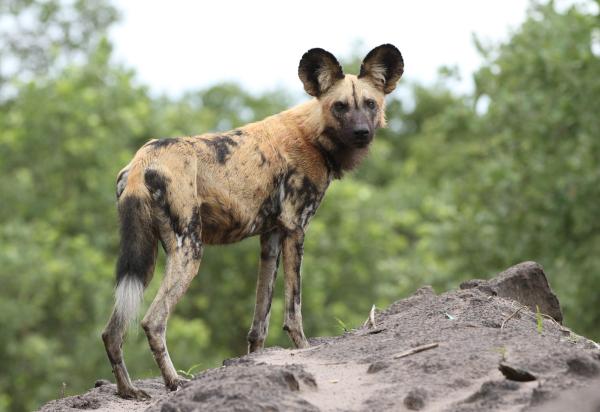
10. African Hairless Dog
The unique coat of African wild dog grows much thinner as they age, meaning they are practically bald once they become senior. A relative is the African hairless dog, a domestic dog which can be completely hairless even when they are young. They are also known as the Abyssinian Sand Terrier and little is known about their origin. It is believed they are a very ancient breed.
In ancient African mythology, they have often been attributed mythological powers. Disregarding any supernatural attributes, the dog is known for their courageous and fearless character, being extraordinarily loyal to their human family.
There is little doubt their most noticeable characteristic is their lack of hair. Some specimens may have little crests on their head and tail. Their ears stand straight and resemble those of a bat. A wide variety of colors are accepted in the African hairless dog breed, including elephant gray, black, bronze, sandy and pale pink. Currently, research is being carried out to determine whether this dog breed might be the progenitor of other hairless dog breeds such as the Chinese Crested Dog.
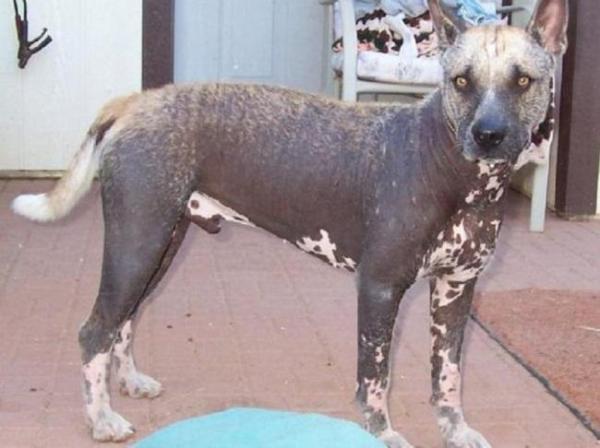
If you have enjoyed learning about the different types of African dog breeds, perhaps you would like to know about some of the other animals which inhabit the amazing continent of Africa. You can do so by check out this video on the top 10 African wild animals:

If you want to read similar articles to Different Types of African Dog Breeds, we recommend you visit our Comparisons category.
1. Parker, H. G., et al. (2017). Genomic Analyses Reveal the Influence of Geographic Origin, Migration, and Hybridization on Modern Dog Breed Development. Cell Reports, 19(4), 697-708.
https://doi.org/10.1016/j.celrep.2017.03.079















